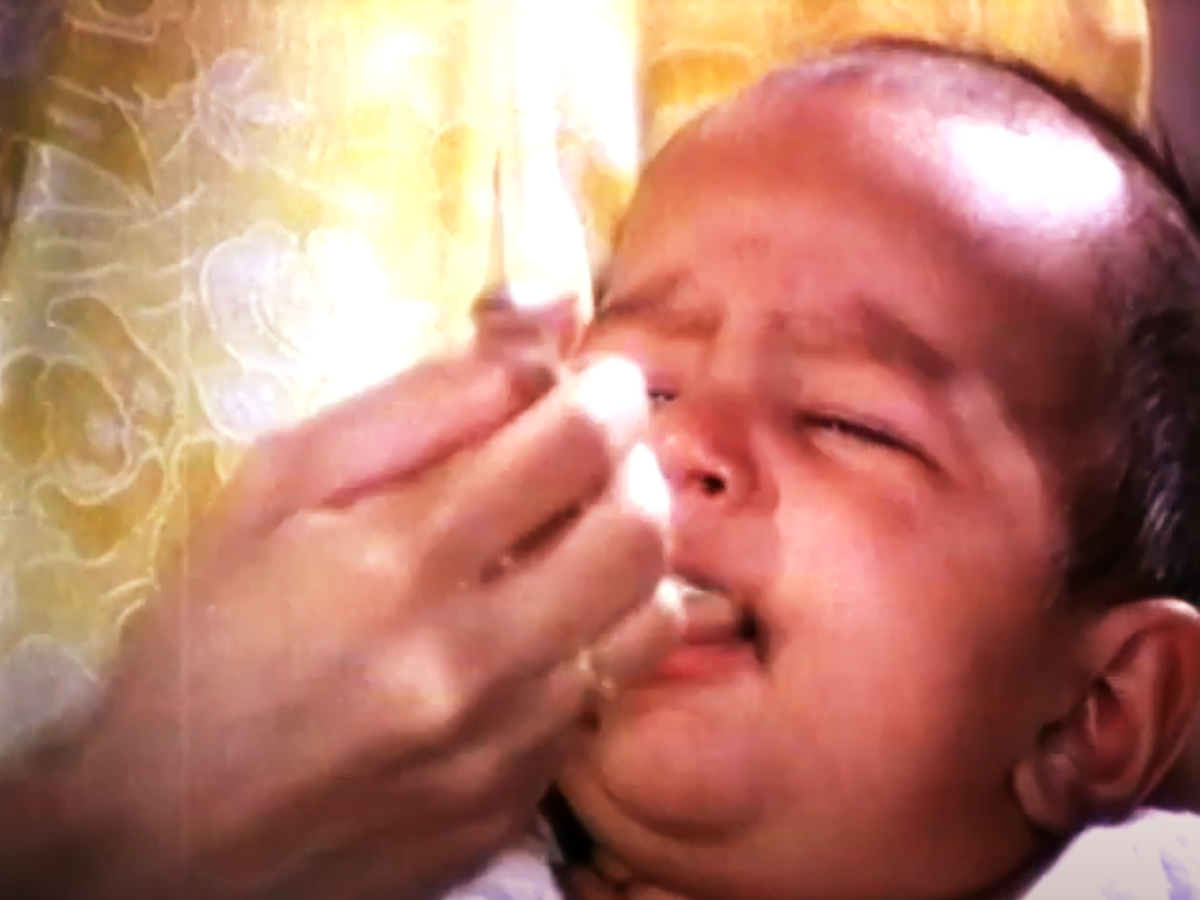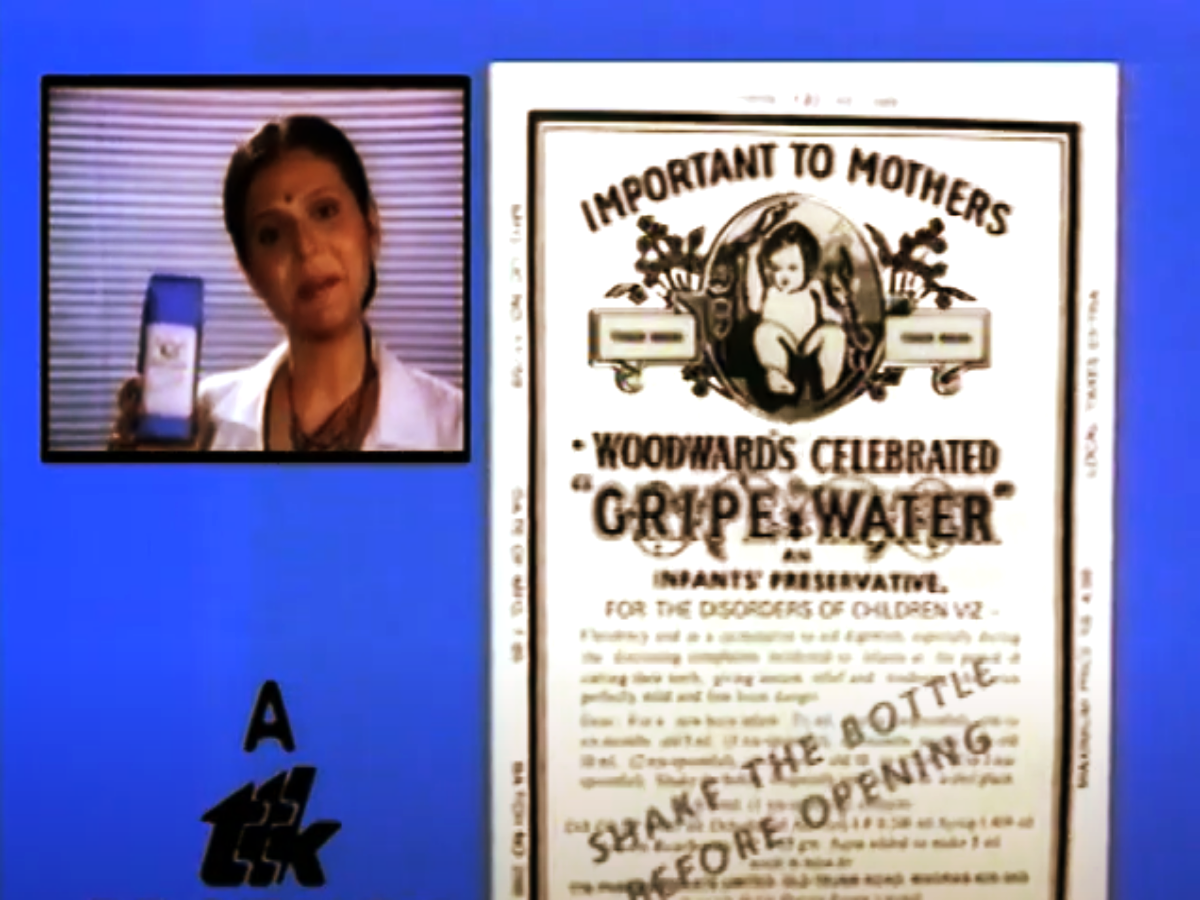When Woodwards Gripe Water became every household’s go-to medicine - ETBrandEquity

Then, her mother enters the scene asking, "Kya hua?" The daughter replies, "Bachchi ro rahi thi." The senior citizen answers, "Woodward's de de. Wahi toh main tumhe deti thi jab tum choti thi." Then, the senior most lady asks her, "Kya hua?" The reply comes, "Bachchi ro rahi thi." The matriarch, whose hands are shaking, rests them on her right shoulder and says, "Woodwards de de. Wahi toh main tumhe deti thi jab tum choti thi."
A journey commuted from decline to acceptance
TT Krishnamachari, also known as TTK, founder of TTK Group, was an existing client of Hindustan Thompson Associates (HTA). In the annual review done by the agency, it was figured that the brand was not doing well and its sales were going down. This got the team thinking of what the possible reasons could be.There was a new product in the market named Bonnisan—an allopathic medicine—whose ingredients were medically recognised. Woodward's Gripe Water was basically 'snake water'. "In those days, the logo of the product would feature a baby fighting with two snakes," said KS Chakravarty, former creative director at HTA. Bonnisan aggressively promoted themselves and targeted the doctors. The doctor community began to strongly recommend Bonnisan and they started de-recommending Woodwards. The community said, "It is horrible, don't use it. It is a waste of time because it harms the baby. Plus, it is an alcoholic drink," recollected Chakravarty.
Here, Dharen Chadha, former account planning director stepped into the picture and began his market research. After studying the market, he returned and explained to Chakravarty, "I spoke to 250 doctors. I went through the whole book of pharmacopoeia. Not a single doctor would tolerate gripe water and pharmacopoeia does not recognise it. We have nothing except the fact that it has been trusted for generations."
The team—at the agency—were sure that the product was good, since they had consumed it when they were young. "Woodwards Gripe Water is made of natural ingredients which is far from being harmful to kids. The thought that circulated amongst the team members was, 'How do we address this issue?'," said Ganesh Eashwar, former senior vice president and general manager, HTA.A young copywriter—at the agency—took up the mandate to pen the script for the commercial. She crafted a scenario of a family setting. As per the story, the camera focus shifted from one person to another. "Each member would say something and end it with 'Woodwards baby'," highlighted Chakravarty. After they went through the script, Chakravarty followed by Chadha expressed their consent.
But, Eashwar was not impressed. He said, "The direction is fine, the strategy is fine but maza nahi aa raha hai. Just make the story alive." Eashwar questioned the ad man over how he would add life to the story.
As Chakravarty narrated the script, people present there—that included Eashwar and Chadha—were in awe of it. Then, Chakravarty, followed by the account planner, Ratan Malli went to present the idea to TTK at his office in Chennai. As per Chakravarty, a 'sweet' old grandmother was the head of the company. Here, he has an interesting anecdote to share. In the meeting, along with her, the marketing director too was present. After the presentation was done by them, Chakravarty asked her, "Can I present it in Tamil?" The senior citizen asked, "Oh, ungaluku Tamil theriyuma? (Oh, you also know Tamil?)" He said, "Chakravarty aakum! Eppadi theriyadu. (I am Chakravarty! How would I not know?)" She gave an immediate go-ahead. "The ad film was always going to be in Tamil. Enna Aachu? Koyindai arar dh (What happened? The baby is crying). Everybody loved that," reminisced Chakravarty.
After the script got approved and was finalised, the ad man took a few decisions to enhance the authenticity of the ad films. He was very sure to have stage actors on board and not advertising models. "I wanted the ad films to be shot in at least three to four languages separately that featured different actors. We wanted to avoid dubbing wherever it was possible," the ad man explained. As per Chakravarty, the commercial was shot in Hindi, Tamil, Bengali and Telugu.
Filmmaker Kailash Surendranath helmed the production and direction of the ad film. Chakravarty had briefed him that he wanted four generations in one frame. Narayan Kumar, who is now the owner of the agency Metal, was the senior most person in the creative department at HTA. He supervised the making of the commercial.
Surendranath said, "On paper, the script felt ordinary. In the frame, there is a baby, there is the baby's mother, her mother-in-law, her mother followed by her mother. Many years later after the film was released, I realised that it turned out to be a classic in the field of advertising. Woodwards is a traditional medicine and it has been around for generations. The film was made in 14 languages over a period of two days. On its release on Doordarshan in the late 1980s, it struck a chord with the audience. Over a period of time, it went on to be fondly remembered.
(The ad film was shot in four different languages and its production and direction was helmed by filmmaker Kailash Surendranath. This clip showcases the ad film in Hindi as well as in Tamil. Here, the actors followed by the setting is same. Their outfits have been changed to suit the audience of that particular region. (Video Courtesy: KailashPictureCompany))
In each language, there were different sets of actors who were roped in. The filmmaker highlighted that the ad film was shot—in Famous Studio in Mahalaxmi—starting from the youngest to the oldest in order to bring forth authenticity. For Chakravarty, the Hindi version of the film did not meet his expectations. "The dialogue by the baby's grandmother came across as very synthetic. In my opinion, the Tamil version stood out," he highlighted.

In the commercial, each visual was different where women were growing older and older. "When an old lady says to another woman, 'When you were a child, I would give you Woodwards Gripe Water', the message was spread without generating boredom which then added value to the brand. It leads to one looking forward to what would come next at the end of that," said Eashwar.
As per Eashwar, Woodwards still remains a product to be given to children when they develop stomach related ailments. "The Tamil version was dubbed in Malayalam, Hindi version was dubbed in Marathi and Punjabi. The part of the strategy was, it will run only in regional languages and not in Hindi in every part of the country. Because, for this kind of a story, this would have not worked. Local authenticity was needed," said Chakravarty.
There were several follow-ups that happened over the years but none of them could match the late-1980s ad film. The ad film was shot in colour and it lasted for 32 seconds. "The continued re-emphasis of the stated dialogue by the four generations highlighted the brand's significance which in turn improved the recall of Woodwards," said Surendranath.
(BE Saal Baad is a series that looks at advertising back in time)


Comments
Post a Comment